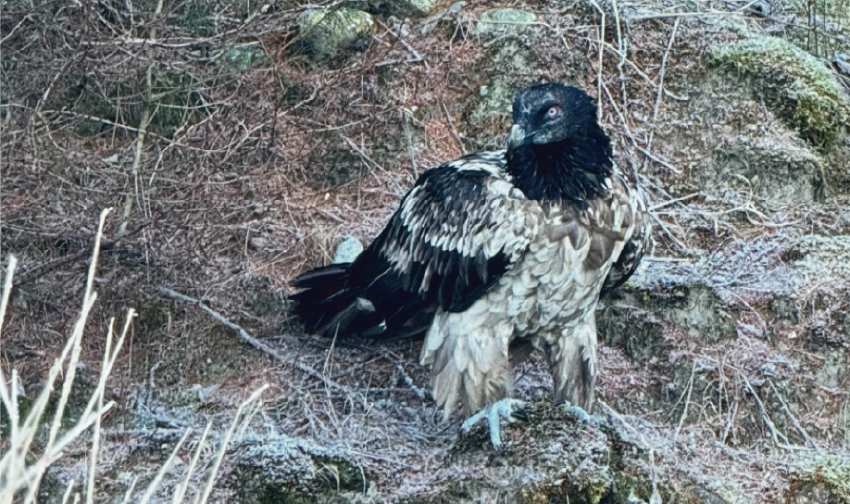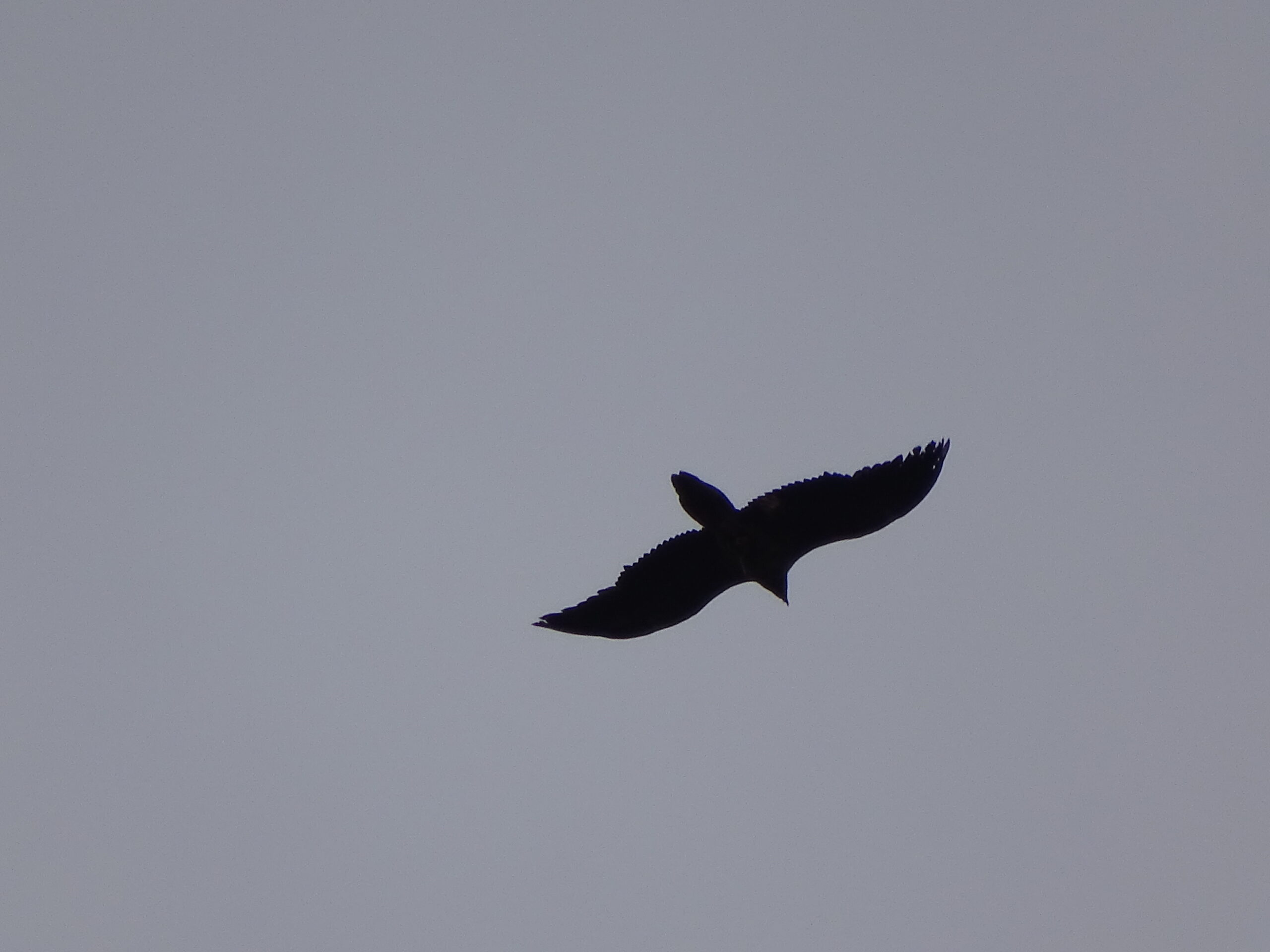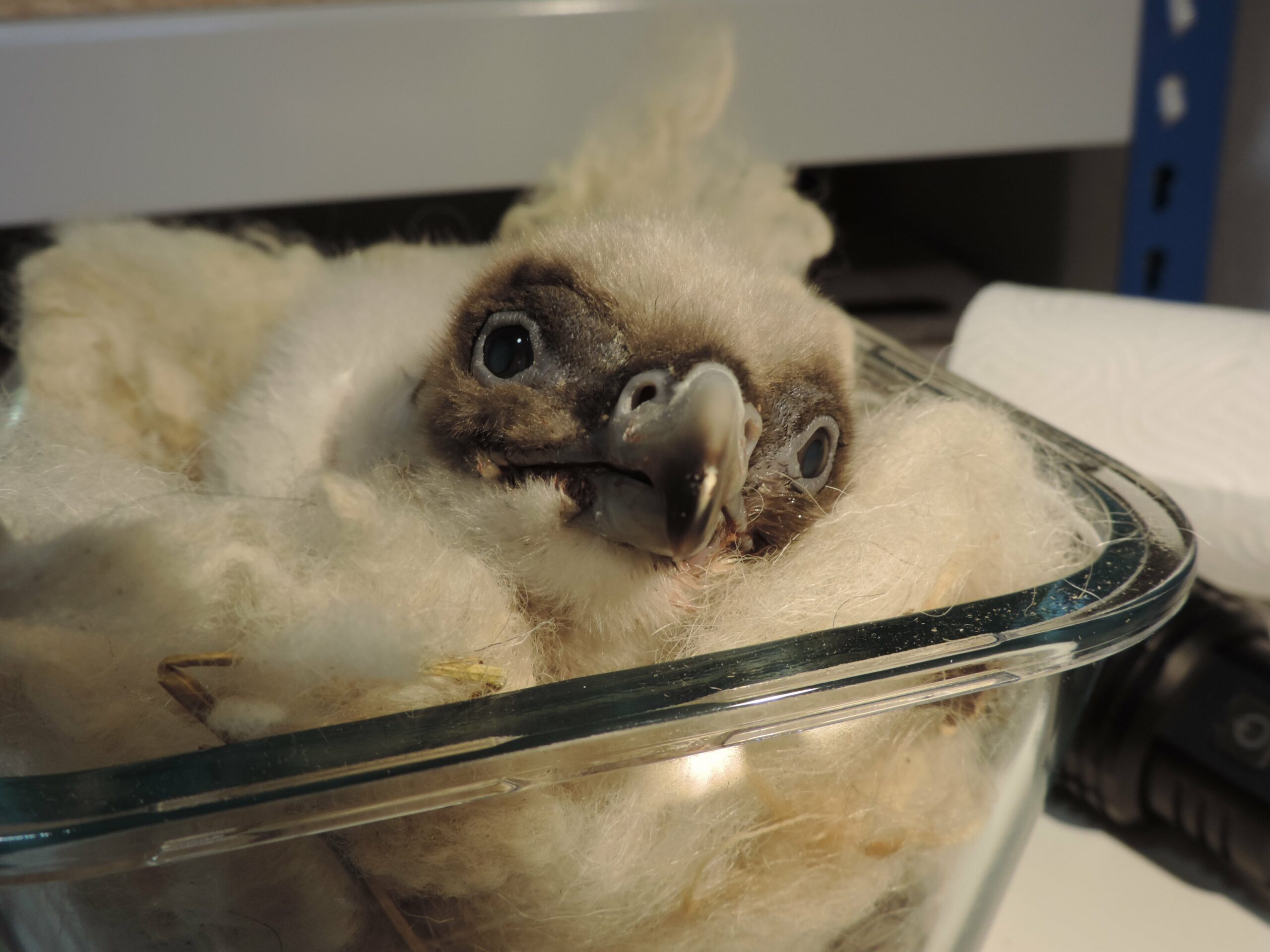Surprising news from Norway! An immature Bearded Vulture (Gypaetus barbatus) made a remarkable incursion into the Norwegian skies that surprised all bird lovers of the country. It was first seen in late December 2023 and recently observed again in the same area. Will it survive the snowy winter there?

Exploring beyond its usual home range
When the first footage of the Bearded Vulture was shared on social media, Norwegians were puzzled by the size and the appearance of this “strange eagle”. The Bearded Vulture is not native to Scandinavia, and this sight underscores the species’ capacity for wide-ranging movements and exploration beyond its usual habitats.
A Bearded Vulture in Norway is an extraordinary event. In fact, several times, we’ve received information of a potential Bearded Vulture flying there that ended up being juveniles of White-tailed eagles (Haliaeetus albicilla), which also have darker plumage in their first years. But this time was different.
A Bearded Vulture in Norway
The bird was seen for the first time in a valley surrounded by snow-topped mountains resembling an alpine landscape, in a rural area on the southwestern coast. A lady saw it from her kitchen window and, driven by curiosity, approached the bird with her car, filming. As she moved closer, she saw an immature Bearded Vulture, with its typical dark plumage on its head, feeding on a deer leg. The bird flew off but eventually returned and was seen at least two more times in the region. It had no ring or GPS tracker.
The footage shared caught the attention of Ellen Hagen, a licensed raptor rehabilitator and the Norwegian representative for the International Association for Falconry and Conservation of Birds of Prey. Ellen met with the observer and shared the news with the media. It prompted a broad interest among Norwegians, and the footage of a Bearded Vulture in Norway has more than 20k views!

In the past, we’ve seen several Bearded Vultures dispersing to unusual areas, like Eglazine, a captive-bred Bearded Vulture released in the Massif Central – France, that spent two summers and part of a winter exploring Holland, Germany and Belgium. While it is common for Bearded Vultures to disperse in their first years, the species was rarely seen in Norway.
Bearded Vultures are extremely resilient birds
Native to the highest mountain ranges in southern Europe (from Western Spain to the Balkans), Asia and Africa (in Africa, it is a subspecies), the Bearded Vulture has mastered the art of thriving in the hardest conditions. With a wingspan that can reach up to 2,85m, they have impressive flying skills. No snow storms or freezing temperatures can scare them away as long as they have food available.
As an obligatory scavenger, they do not hunt for prey. They soar the skies to find carcasses, especially bones, which comprise up to 85% of their diet. Thanks to their highly acidic gastric juices, they can digest bones like no other bird. An advantage point to surviving in the most challenging winter conditions. Unlike the flesh of a carcass that decomposes quickly, the bone marrow can store a large percentage of protein and other minerals essential to Bearded Vultures.
Which threats can the Bearded Vulture face in Norway?
Food is the first problem for Bearded Vultures that venture too far from their usual habitat. The reduction of domestic and wild ungulates in the last century was one of the reasons behind the steep decline of the species in Europe. When a Bearded Vulture ventures into densely populated areas, it is hard to find food. Luckily, this is not the case for Norway, as there seem to be enough deer and reindeer carcasses to eat from. So far, it has survived the hardest part of winter in Norway and can find food.
There are, however, other threats. In the past, a Cinereous Vulture was also seen in Norway but had a sad fate: a wing amputated after colliding with a wind turbine. Energy infrastructure is one of the main threats that large-bodied birds (and many others) face. In the Netherlands last year, a Bearded Vulture also died after colliding with a wind turbine.

For now, we are hoping for the best: the bird seems healthy, avoids getting too close to humans and has been able to feed. Where will it go next?
Sources:
- Ellen Hagen (thank you, Ellen)
- https://www.tv2.no/nyheter/innenriks/han-var-sa-svaer-at-eg-berre-sat-og-hyla/16360116/



